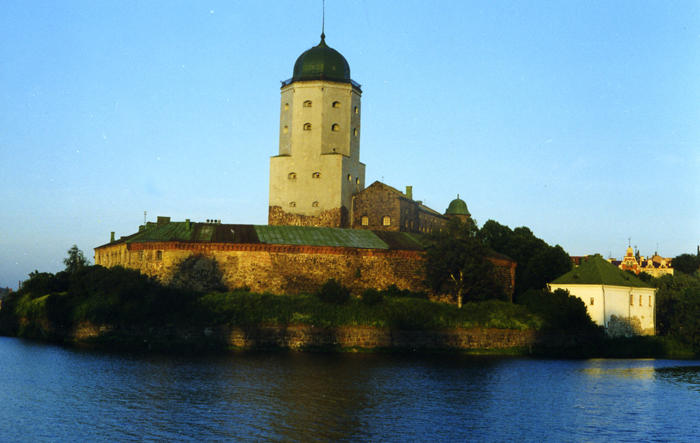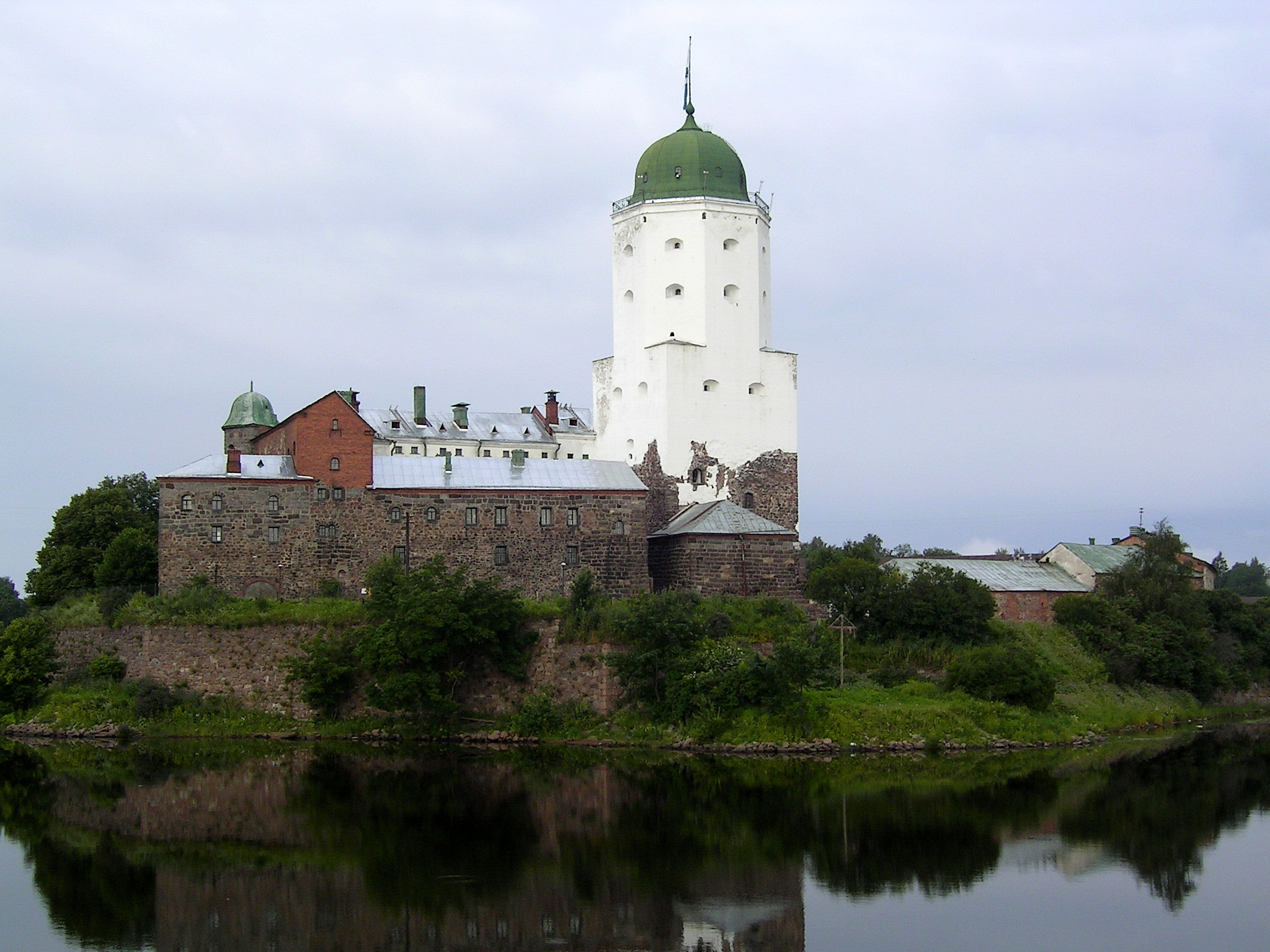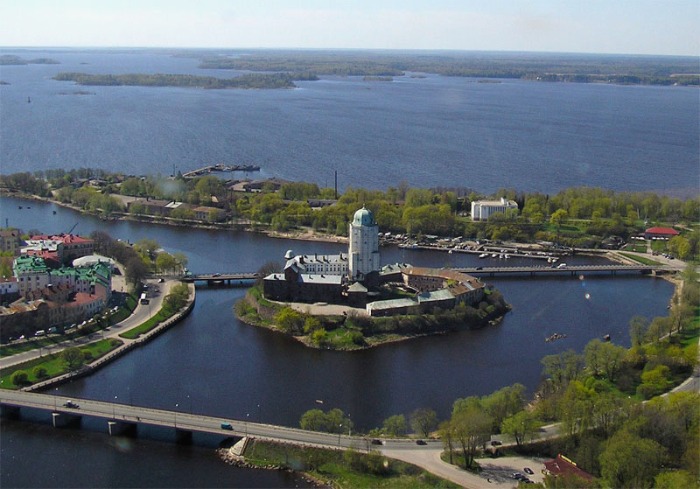Vyborg Castle is a Swedish-built medieval fortress around which the town of Viborg (today in Russia) evolved. Currently it serves as a museum.
Vyborg Castle was one of the three major castles of Finland. It was built as the easternmost outpost of the medieval Kingdom of Sweden: it is located on the Karelian Isthmus, on a little islet in the innermost corner of the Gulf of Finland, in a tight strait which connects Suomenvedenpohja to Bay of Viipuri. It was originally constructed in the 1290s.
The town was originally located inside the outer fortifications of the castle, at the fortress island, but it had to be moved to its present location out of the island because of lack of space.
Construction of the fortress started in 1293 by orders of Torkel Knutsson, Lord High Constable of Sweden, who made in the 1290s a supposed crusade against Karelia, the Third Finnish Crusade, which actually was aimed against the Russians of Novgorod Republic. Knutsson chose the location of the new fortress to control the Bay of Vyborg, which was bordered by trading sites long used by the local population. From the bay, a navigable river passage goes inland, ultimately connecting the place with several districts, lakes, and, indirectly by portage, with rivers flowing into Lake Ladoga.
The three high-mediaeval Finnish "castle fiefs" were ruled until the 1360s from the castles of Åbo (today:Turku in Finnish), Tavastehus (today Hämeenlinna in Finnish), and Viborg (today: Vyborg in Russian and Viipuri in Finnish).
In 1364, Albert III of Mecklenburg was proclaimed king of Sweden, and in accordance with the German model he began to divide the castle fiefs, which were immense in Finland, into smaller provinces. In some instances, these new, smaller provinces were given separate bailiffs' residences which have since disappeared; this was the case with the Linnavuori castle mound in Porvoo and the castle of Korsholm in Ostrobothnia, near the today city of Vaasa which was founded later. Only earthworks remain at these sites; but in two places, still-extant though now ruined stone strongholds were built: Raseborg Castle, in western Uusimaa (west of Helsinki), and Kastelholm Castle, in the Åland (Ahvenanmaa) Islands.
The castle became the stronghold of the Swedish realm in Karelian regions. Throughout the centuries, it was the first defence of the kingdom against Russians. Its military and strategic status was in the late Middle Ages only second to the fortified capital Stockholm.
The castle and the large surrounding fief became a virtually autonomous principality. Its governors were usually enfeoffed with the incomes of the county. The fief of Viborg became known as a margraviate. Its governors were generally from the most powerful families of the kingdom. They enjoyed large administrative powers, at a significant distance from the capital. Those realities made them practically independent rulers. Usually, the castle of Olofsborg Olavinlinna (built in the 1470s) was subjugated to Viborg.
Prominent men who held Viborg as their fief included Bo Jonsson (Grip), Christer Nilsson Vasa (1417–42), Karl Knutsson Bonde (1442–48, the future king), Eric Axelsson Tott (1457–81), Knut Posse (1495–97), Sten Sture the Elder (1497–99, between his regencies), Eric Bielke, and Count John of Hoya. Particularly in the 1440s and the late 15th century, the fortresses were further enlarged.
The first mention of firearms in Finland relates to Viborg castle, in 1429. During the Middle Ages, the Russians repeatedly besieged the castle: most famously, in 1495, during the Russo-Swedish War (1495–97), while Knut Posse was governor of the castle. The situation of the defenders looked hopeless, but they were saved by the Viborg blast on 30 November 1495, a mysterious explosion which scared the Russians away because they believed that they had seen a Saint Andrew's cross in the sky.












